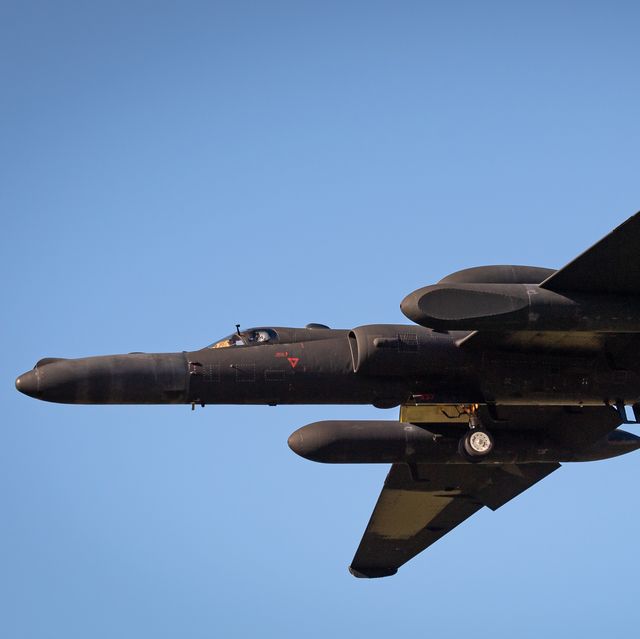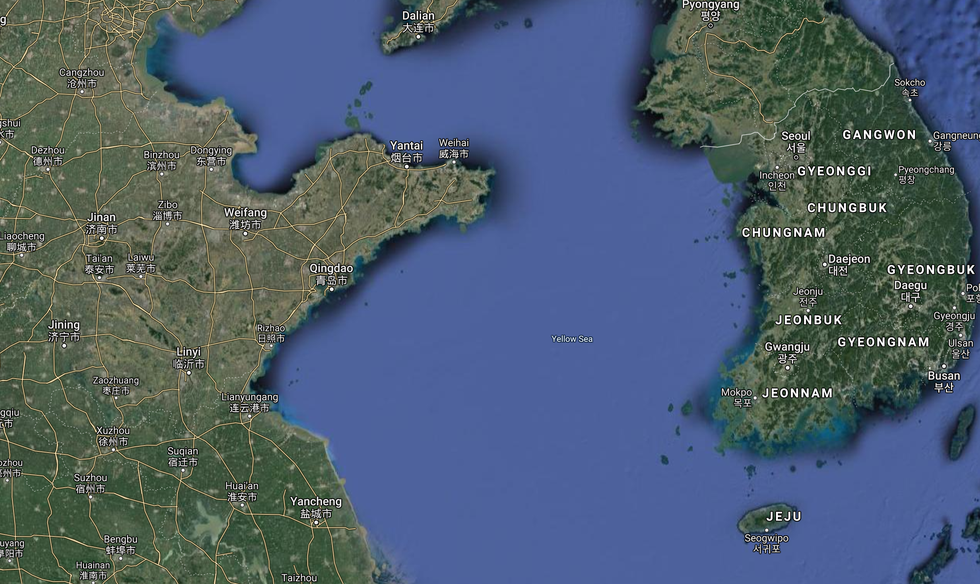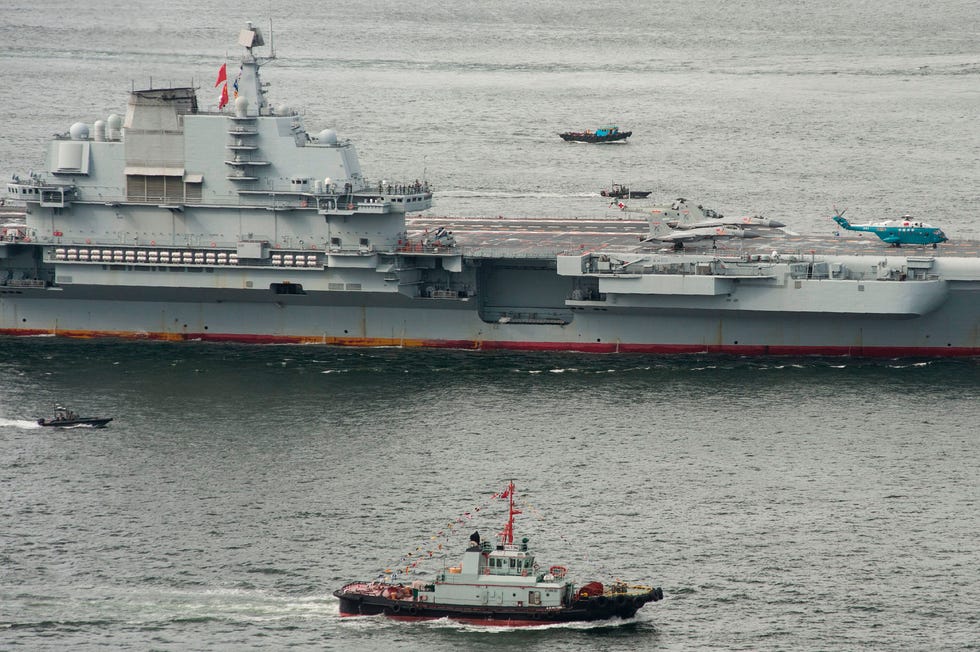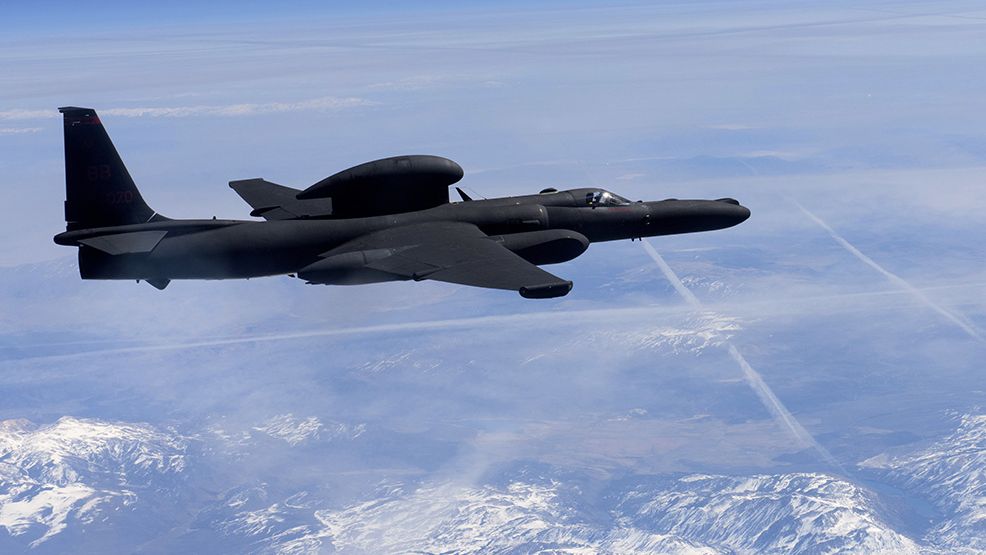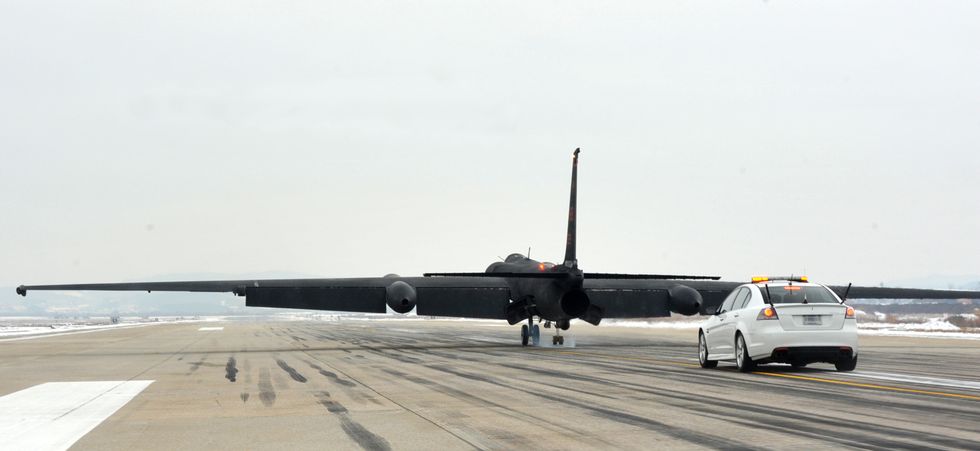- China accused a U-2 spy plane of entering a live zone while snooping on a military exercise.
- Beijing complained the overflight was a “provocation” and lodged a complaint with Washington.
- Countries typically spy on one another’s military exercises to gain information about key weapon systems.
China claims an American U-2 spy plane interfered with planned military exercises, wandering into a no-fly zone where live ammunition was being fired. Beijing complained the exercise was reckless and could have led to a “misunderstanding” between the two countries. The U.S. government has not commented on the alleged encounter.
✈ You love badass planes. So do we. Let's nerd out over them together.
The incident reportedly took place on August 25 above the Yellow Sea off China’s north coast. According to the Chinese tabloid Global Times, China’s military was holding military exercises in the Bohai Sea and the Yellow Sea. Another source narrows it to waters between the cities of Qingdao and Lianyunggang to the south. This places it in the People’s Liberation Army Navy's Northern Theater, which has its headquarters in Qingdao.
The Pentagon’s 2019 annual report to Congress on Chinese military power states China’s Northern Fleet includes one aircraft carrier, four nuclear-powered submarines, 16 diesel electric submarines, 11 frigates, and eight landing ships. The carrier is Liaoning, China’s first true aircraft carrier, which is likely a training ship designed to get the country’s fledgeling carrier force up and running.
The U.S. military is particularly interested in China’s carrier force, which currently consists of Liaoning, Shandong, and a third carrier, Type 003, which is under construction. Experts believe China will eventually build anywhere from four to six carriers.
The U-2 involved was likely part of the U.S. Air Force’s 5th Reconnaissance Squadron, operating out of Osan Air Base, South Korea. If Liaoning was conducting flight operations, a U-2 could use its SYERS2C 10-band multispectral camera to observe carrier takeoffs and landings, and even activities on the flight deck. SYERS2C uses visible light and various infrared bands to see through atmospheric conditions (like clouds and fog) where other cameras cannot.
The Chinese Ministry of Defense issued the following announcement on its website:
Today, the U-2 high-altitude reconnaissance plane arbitrarily broke into the no-fly zone for live ammunition exercises in the northern theater of the Chinese People’s Liberation Army, seriously disrupting China’s normal exercises and training activities, seriously violating the China-U.S. maritime and air safety code of conduct and related international practices, and could easily lead to misunderstandings. The conviction even caused accidents in the sea and air is a naked provocative action. China firmly opposes this and has lodged solemn representations with the United States. China requires the US to immediately stop such provocative actions and take concrete actions to maintain peace and stability in the region.
It’s odd that China is complaining about the U-2 surveillance, which likely happens every time Liaoning is at sea for exercises. Other, more dangerous incidents have taken place: In 2001, a Chinese fighter collided with a U.S. Navy EP-3 reconnaissance aircraft, resulting in the plane and crew being held in detention by Chinese authorities for two weeks.
In 2014, a Chinese fighter buzzed a P-8 Poseidon maritime patrol plane, coming within 20 feet of the larger plane and causing the Pentagon to complain about the Chinese fighter’s “unsafe” flying. And in 2018, the guided missile destroyer USS Decatur almost collided with a Chinese Luyang-class destroyer after the Chinese ship closed to within a stone’s throw of the American ship.
The more likely explanation? China was simply irate that a U.S. spy plane was operating off the coast of China.
U.S. ships and aircraft can easily operate just outside China’s borders, a result of having bases in nearby Japan and South Korea, while Chinese military forces rarely operate off the coast of the U.S. This is understandable to an extent, as the U.S. would likely be unhappy if Chinese planes were hanging out in the Gulf of Mexico or the Bering Sea.
Despite China’s growing military capabilities, it seems unlikely this imbalance will change any time soon. For now, the only proactive card Beijing can play is occasionally complaining about it.

Kyle Mizokami is a writer on defense and security issues and has been at Popular Mechanics since 2015. If it involves explosions or projectiles, he's generally in favor of it. Kyle’s articles have appeared at The Daily Beast, U.S. Naval Institute News, The Diplomat, Foreign Policy, Combat Aircraft Monthly, VICE News, and others. He lives in San Francisco.
